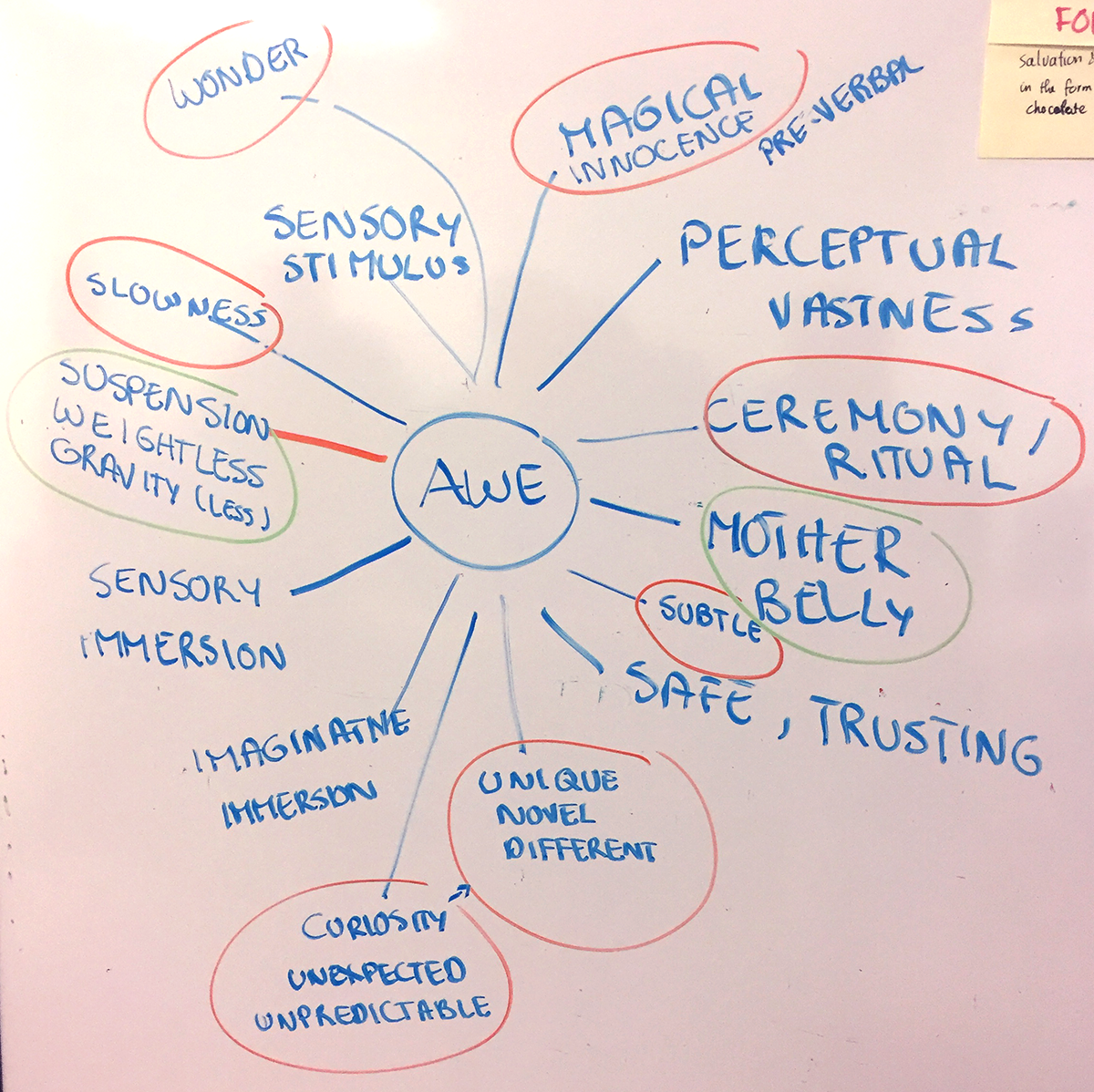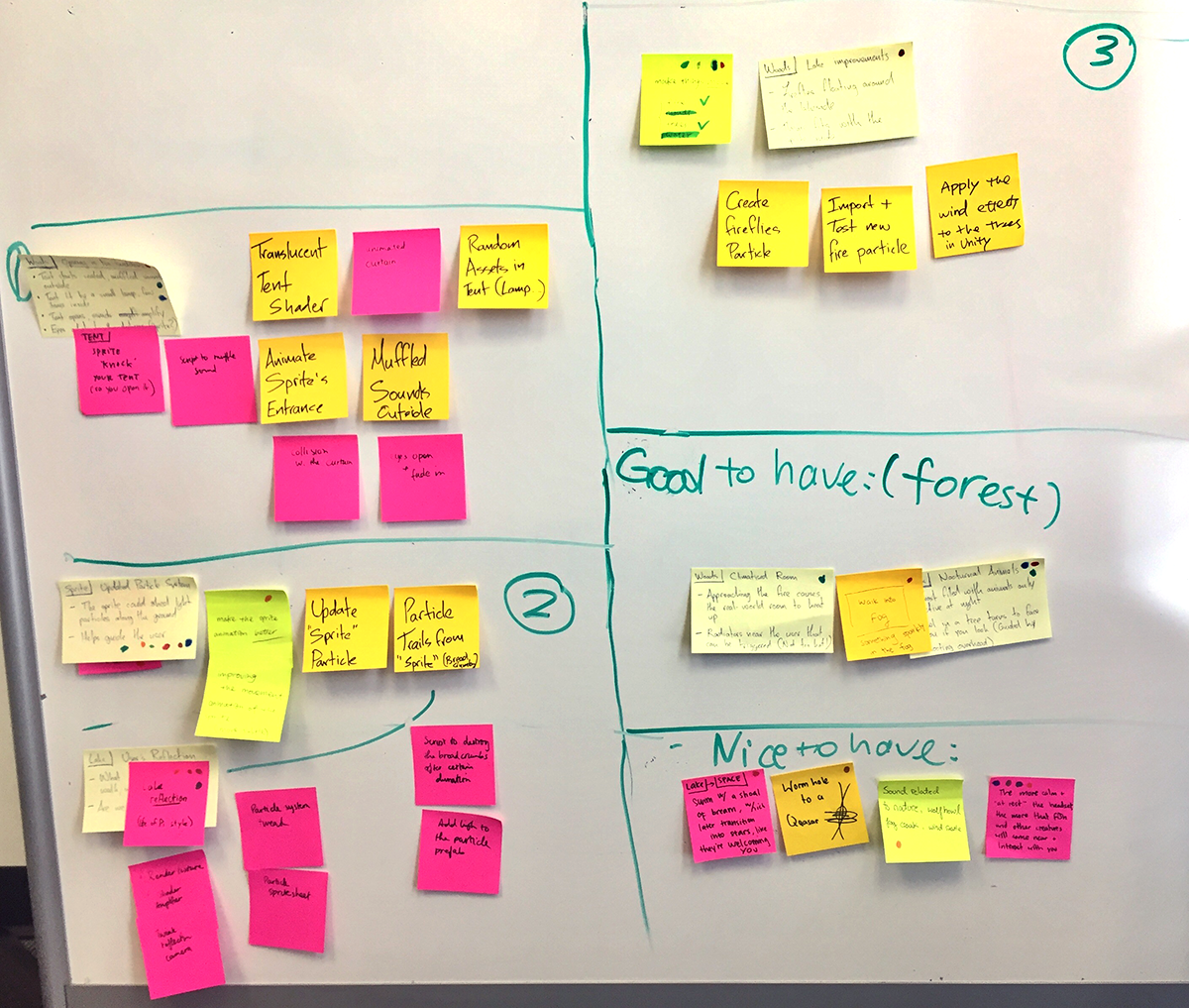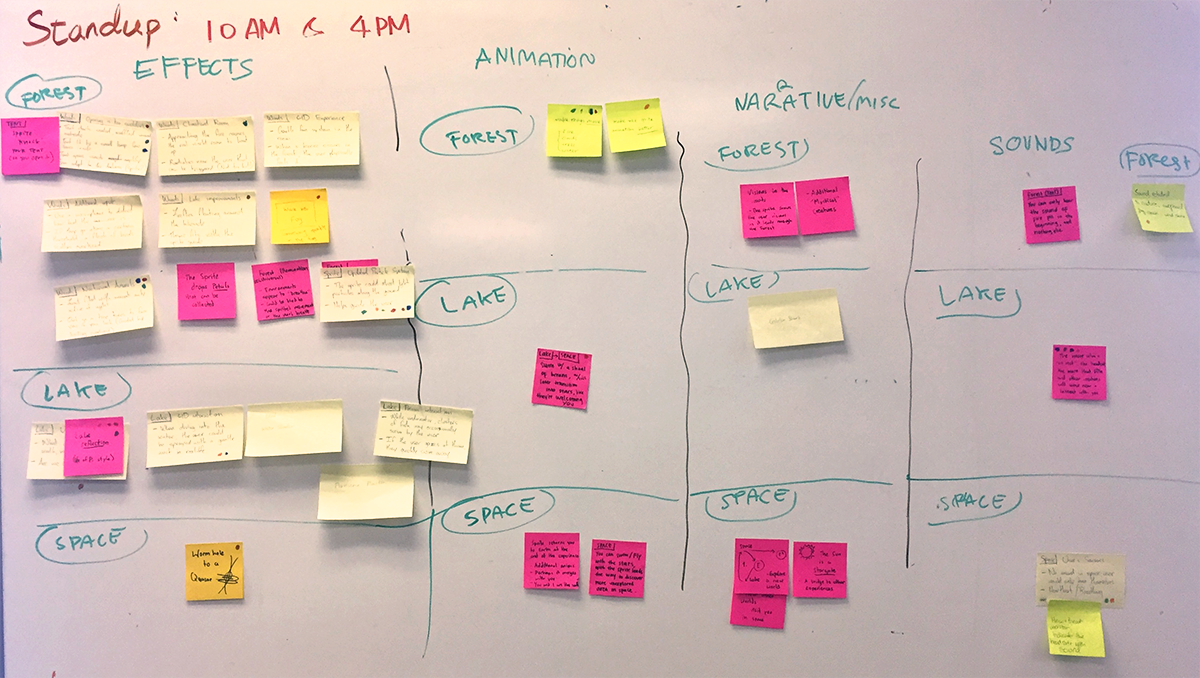Client SFU iSPACE LABS (ispace.iat.sfu.ca)
Date JULY 2nd - July 13th, 2018
Team
Seán Conroy (VFX Artist, UX Design)
Samantha Yueh (Scrum Master, UI/UX Design)
Nick Kubash (3D Artist, Concept Artist)
Viet Phan (Developer)
Andy Yao (Developer)
Thalita Karina (VFX Artist)
Manni Zhang (Creative Lead, 3D Animator)
Project Goal
The iSpace lab uses virtual reality for fundamental research, it then uses that fundamental research to improve virtual reality. This project focused on the AWE prototype, our team was tasked with implementing new features as well as making improvements to the existing ones: to enhance the immersive experience. This should, in turn, enhance the moments of awe and wonder experienced by the user.
Challenges
- Short production time (10 working days)
- First time working on a VR prototype
- Managing the scope of the project
MY CONTRIBUTIONS
- Highlighted weakest points in the experience and provided various solutions and additions.
- Enhanced the aesthetic of the experience by creating new particle systems and shaders.
- Increased immersion by making improvements to the lighting and atmosphere of the experience.
PERSONAL TAKEAWAYS
- First time working on a VR project.
- Learned to design UX experiences that utilised the VR medium.
- Learned how to make lighting and atmospheric changes in Unity.
Process
Brainstorming with Client
During our first meeting with the client, we learned a great deal about the "Awe-Inspiring Wellness Environment" project that they were researching. They gave us a breakdown of the overall flow of the experience as well as some of the aspects of it that they felt could be improved and what could be added. We shared our thoughts on what moments of awe meant to us and started to plot them on a graph.
After the meeting, we planned out what features we would work on for this project. We divided the experience into 3 key sections, forest, lake and space, and started writing up any potential ideas that we could add to or improve in each. After further discussion, we prioritised these features based on 3 constraints: effectiveness, time to implement and our excitement about the feature. Using this method, we were able to create a plan to follow that included must-have, good-to-have and nice-to-have features, allowing us to prioritise our workload effectively.



Brainstorming and prioritising features
Immersing Ourselves
It was one thing to hear about the project, but it was another thing to experience it ourselves. The day after the meeting, we were able to try out the current build of the project to get a better idea of what our client was trying to achieve. Each team member tried the experience and had valuable feedback and suggestions on what to add or improve. We made some slight changes to our initial plan, having now tested the experience, and it allowed us to create better solutions than the day before.
Trying out the current build of the experience
Rapid Prototyping
Unlike other projects in the xR Prototyping Lab, this time we had a starting point to build upon, rather than designing something from scratch. This made prototyping much easier as we were able to begin as soon as we had the original project files from the iSpace team. As each member of the team was working on different features of the experience simultaneously, we developed smaller, individual prototypes that were each tested before combining them together into a single larger test build. This made our workflow much more efficient and made it easier to combine and test features together later in development.
Internal testing of individual features of the experience
Once we'd combined several features into a larger prototype, we would then invite our client to come and test the experience for themselves. They actively gave us feedback as they played through the prototype, which allowed us to mark aspects of the prototype that needed additional work. We continued with this approach right up to the final prototype that we handed off to our client.
Testing and feedback with our client
Final Hand-Off
For the final hand-off, the team was invited to the SFU campus in Surrey where the "Awe-Inspiring Wellness Environment" was physically set up, consisting of a pre-VR installation and the immersive VR experience. We were given a walk-through of the space, learning how the changes we'd made would play into the overall experience. The client was happy with what we had implemented in such as short amount of time and informed us that our work would be used for further research endeavours.
For me, as this was my first ever VR project, I was glad to finally be able to work within this environment. I gained a greater insight into designing and creating experiences in VR and would love to be a part of more projects like this in the future.
You can learn more about the AWE project here